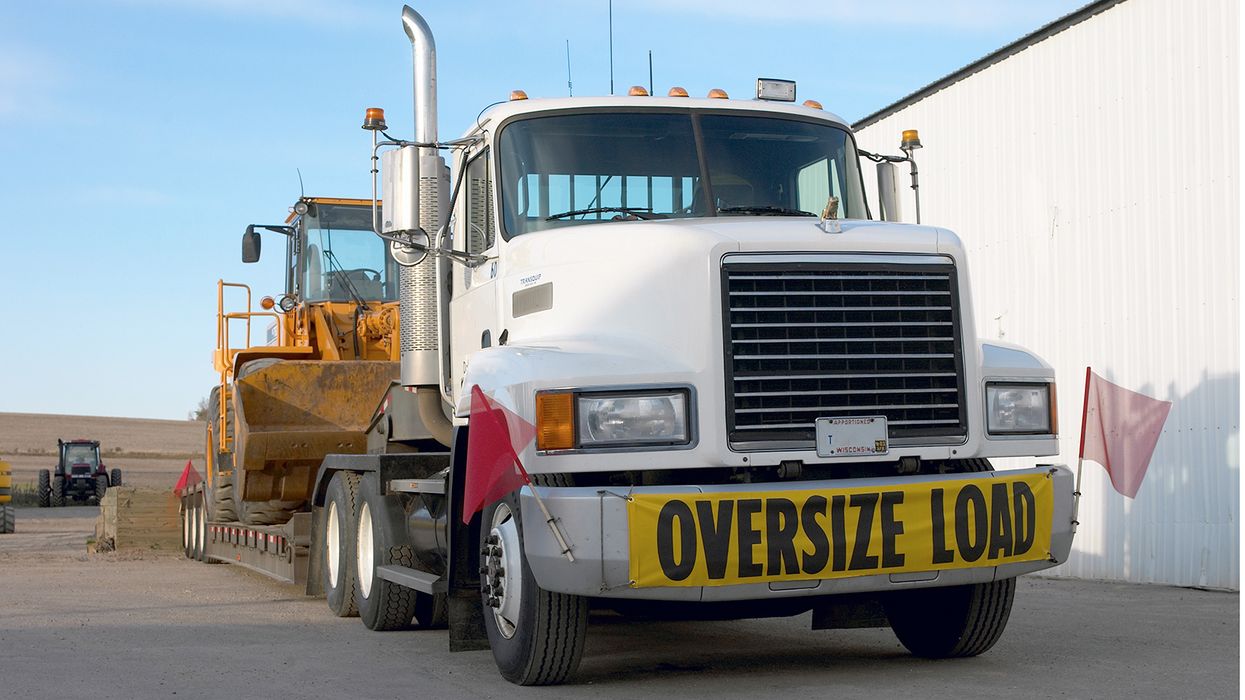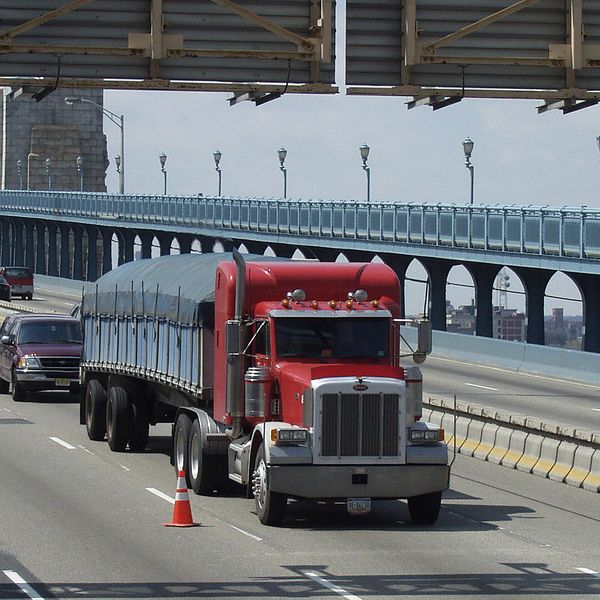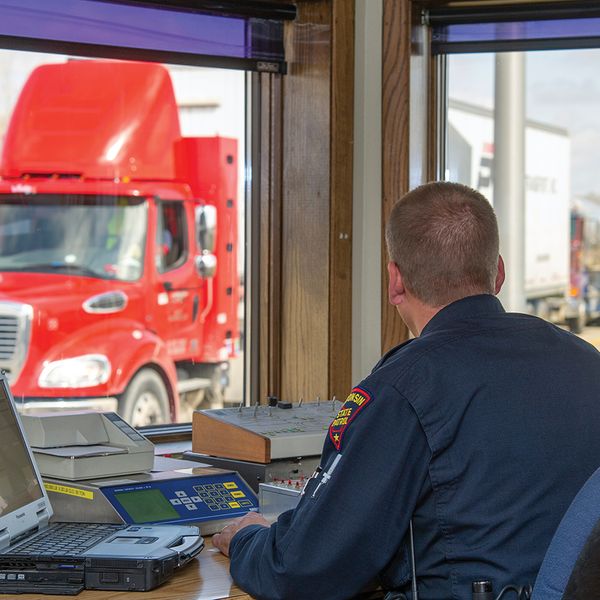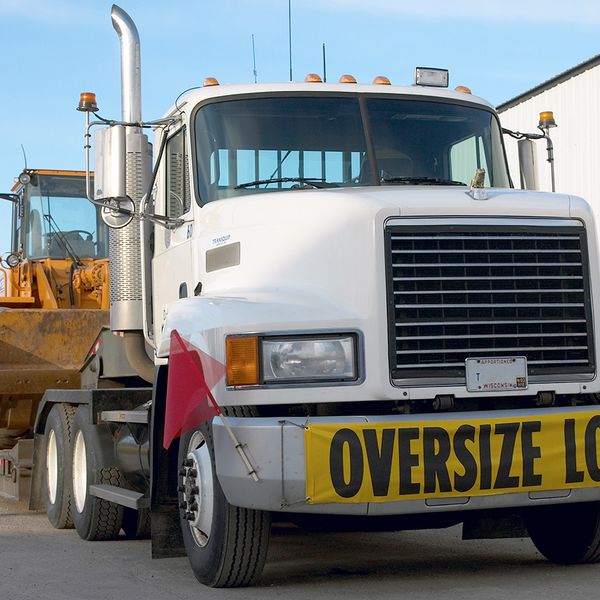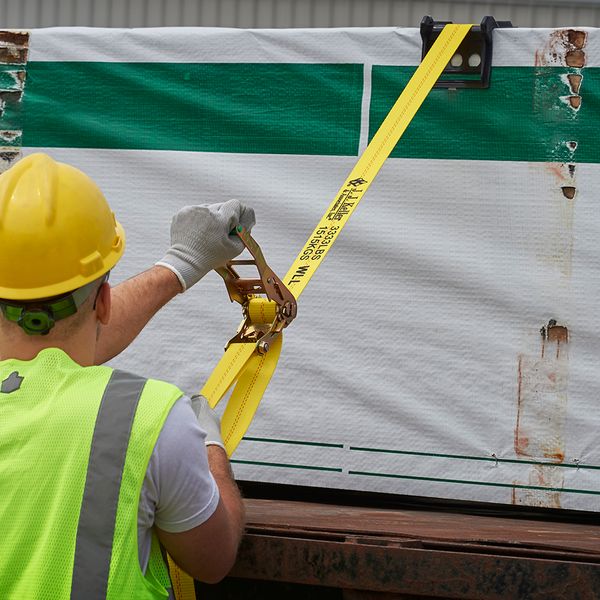Don’t drive high in Canada: Know the height of your load!
Knowing the height of the load being hauled seems straightforward enough for an enclosed trailer unit; however, what about flatbed load heights when the loading was done before your driver arrived to pick it up?
Ensuring your drivers are aware and familiar with height limits is very important; if a load is over-height, drivers are at risk of hitting awnings, overpasses, and bridges. This becomes even more critical to know if the driver wasn’t involved in loading. In addition, the vehicle height could easily change depending on what load is being carried and could change if your drivers are picking up multiple loads throughout their shift.
The consequences for having an over-height truck in Canada may vary depending on the province or territory where the violation occurs but could result in a fine, being ordered to unload excess cargo, or even being denied access to certain routes.
Are you too high?
Overhead clearance has become such a problem in Canada that some jurisdictions have started to report bridge strike incidents to the public.
The British Columbia Transportation Ministry for example made the announcement recently that fines will quadruple to $575 for drivers that have over-height loads and violations can be stacked to take that total much higher.
This could also include the cancellation of a carrier’s safety fitness certificate, which would effectively prevent the company from operating in the province.
The standard height of a semitrailer in Canada is 4.15 meters; however, the maximum height of a vehicle may vary depending on the jurisdiction and the type of load. Some bridges or overhead structures may have a lower clearance than the legal limit. Drivers should also check the signs on the edge of trailers or the labels on the equipment to verify the height of the vehicle. If drivers are unsure, they need to measure or get out and look before driving.
Knowing the low-down and what to do.
There are several possible reasons why trucks keep hitting overhead structures, bridges, etc., such as your drivers using unapproved transport routes or not following the signs for low clearances.
Perhaps your drivers are not measuring their loads or knowing the exact height of their vehicles in both metric and imperial units, especially if they cross the border between Canada and the U.S, or not receiving adequate guidance from the shippers, receivers, or regulators on how to safely transport over-sized loads.
Once finding that a vehicle/load is over-height, you or your drivers can obtain over-height permits for vehicles that exceed the maximum height limits; however, this does change the fact that the height of the load will still be restricted.
These restrictions vary by province and territory; be sure to check the specific regulations and your permits for your destination before you travel. Some of the common restrictions include:
- Road Safety. You may need to use escort vehicles, warning signs, flags, or lights to alert other drivers of your over sized load.
- Infrastructure Considerations. You may not be allowed to drive on certain roads, bridges, or tunnels that cannot support the height of your over sized load.
- Time of Day. You may only be allowed to drive during certain hours of the day, depending on the dimensions of your over sized load.
The stakes are high.
Height limits are in place to protect the safety of others on the road and to prevent damage to infrastructure and other property. Fines, safety fitness certification cancellation, and bad public perceptions are just a few of the major consequences of operating with over-height loads.
Key to remember: At the end of the day, your drivers are ultimately responsible and need to know how to properly measure loads, plan for trips (including permits if needed), and know whether loads will easily clear the height clearances on a route.

